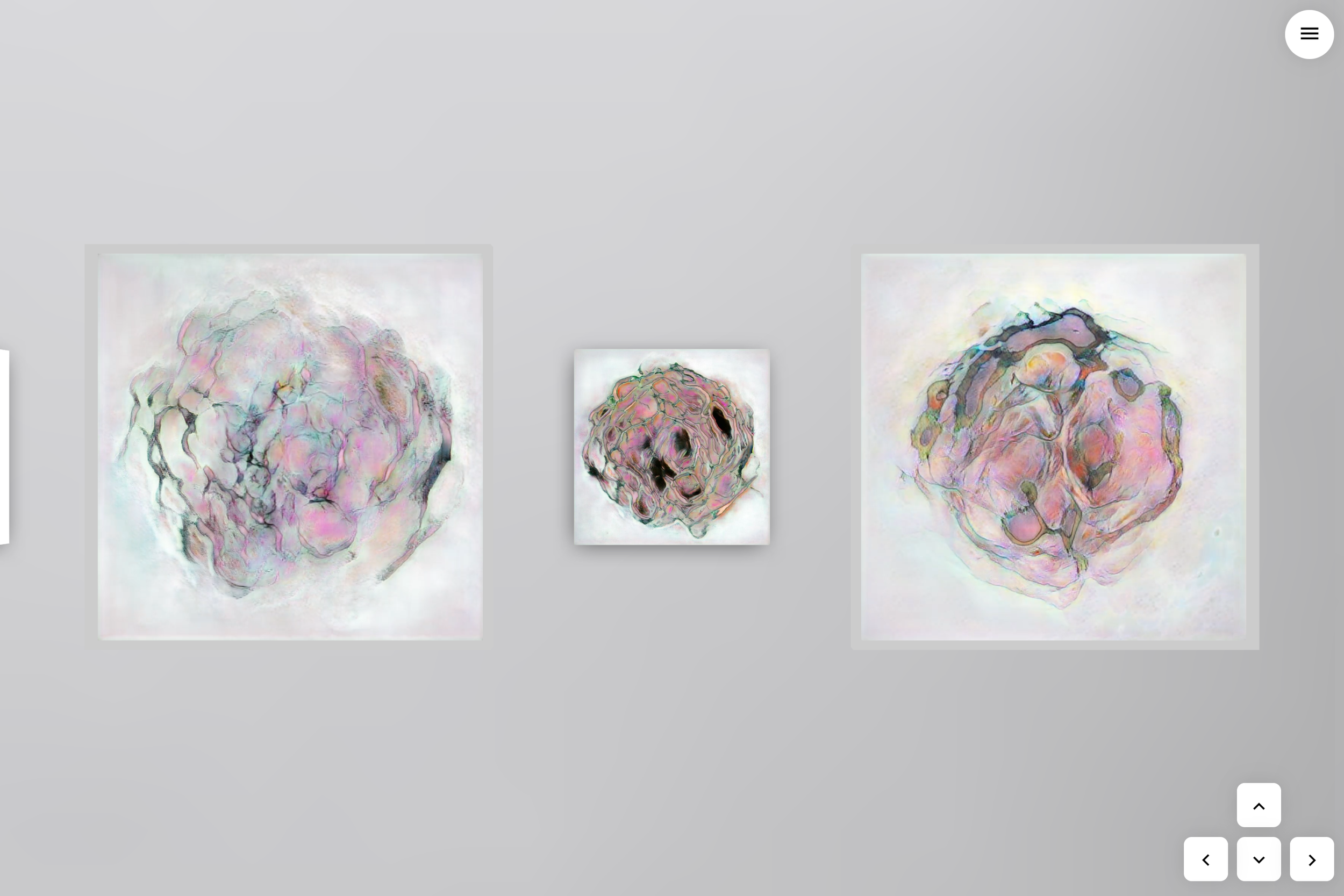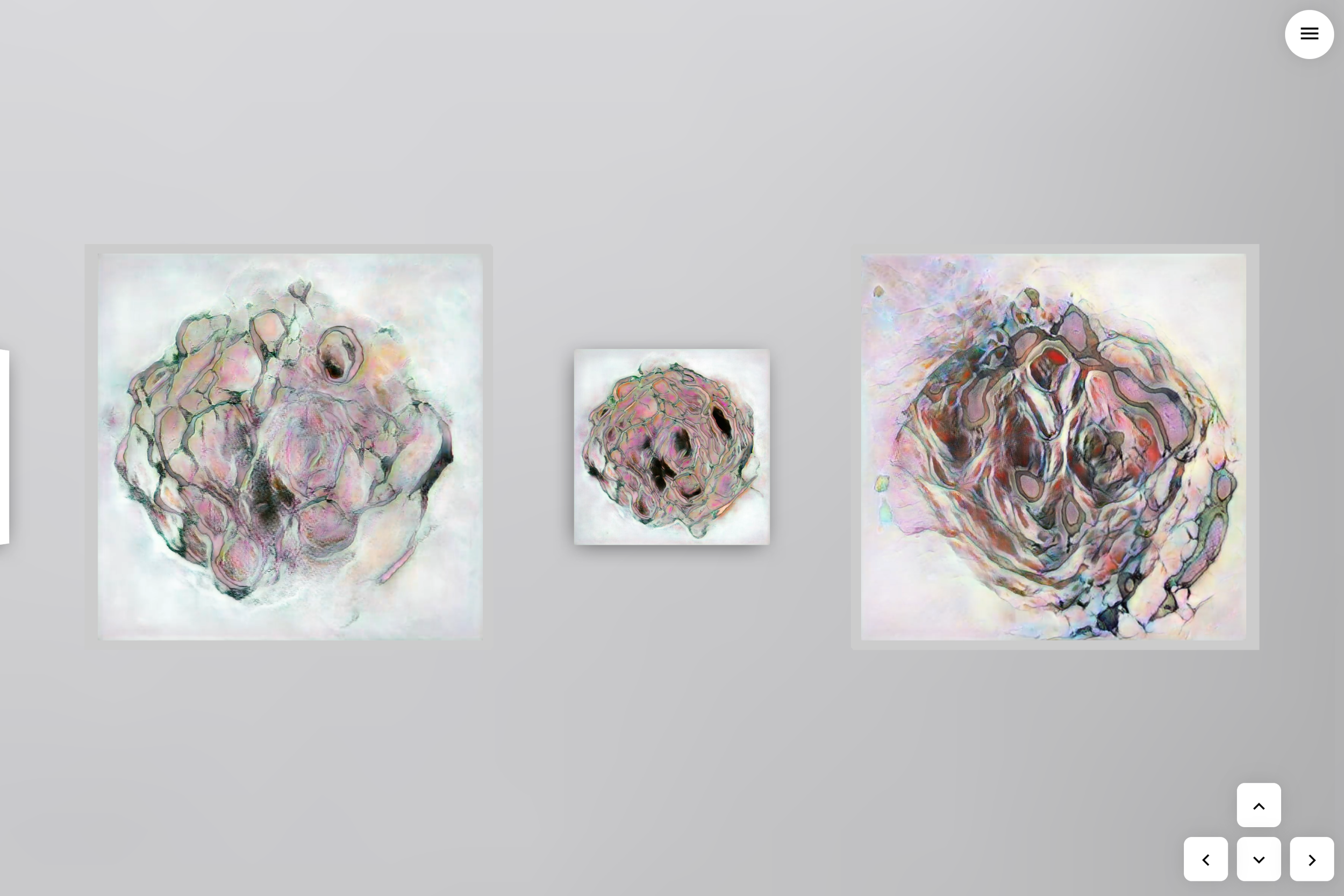We have enough.
Expressions of Radical Hope: “We Have Enough”
Every week, I listen in to Midjourney Office Hours. I find so much of it fascinating, and I take notes to update my learning collective people to fill them in on changes, new features, and philosophy. There is a channel on the Midjourney Discord for the “daily theme” - you can choose to get notified when this theme changes or not, but it’s people in the same channel making art on the same topic. Often, this daily theme changes to reflect something discussed in office hours - like robot squid. I usually include some of these images with the update to the learning collective. This week it wasn’t really related, and I felt inspired by all the topics of discussion in general and made some abstract painting images. I try to prompt shapes, colors, styles, and materials I actually use.
I also used combinations of these ideas: new computer science, art history, biodiversity, responsibility, exploration, community, infinite compute power, radical hope, a beautiful future, post-scarcity, and monkeys looking for bananas in new places. (😂 It's always a good time!)
After making these images, I also used the /blend feature to really get something I was feeling. I took this image into Photoshop and used the neural filter Super-Zoom to upscale. Next up, I opened the upscaled image in Adobe Fresco to get painting - the live brushes are really lovely. If you’re a traditional artist working with AI, someone who has painted in Photoshop forever, or a new artist starting with AI-generated images and learning to paint digitally, definitely check it out.
I’m loving the tools that Midjourney has for making art, but also the community. So many acknowledgments of systemic issues and how we can have a better future. So much awareness that we have enough, for everyone. If I could see this community as a sea of people, I imagine many of them have these sparks of radical hope glowing within them… (Now there’s another thing for me to go prompt) 🖤✨
OBSERVANCE
Review of my recent exhibition: OBSERVANCE
OBSERVANCE was held in conjunction with over 60 other exhibitions taking place in the month of May as part of the inaugural Taking. Up. Space. Initiative. After the opening, I was honored to speak with the Thrive Together Network about the exhibition and the work. I also held a live Q & A session on Instagram discussing my process, working with artificial intelligence, and creating a virtual exhibition. There were over 200 individual visitors to the exhibition, and I’m grateful to each of you who spent time in this space.🖤
“During a month-long residency, I practiced holding space for myself using mindfulness and creative expression using traditional materials. This practice has been developed through my studies in art therapy and personal trauma recovery work, with the phenomenological knowledge that these expressions are tied to our bodies. We can not create anything that does not come from within us. AI is the same, it can only give us back what we teach it. I use it as a tool for reflection in meditative practice, where I observe the AI rendered images with curiosity and non-judgment. The works that come from this practice serve as reminders to the viewer, of self-acceptance, of acceptance of others, and that we can create these spaces for ourselves and each other.”





















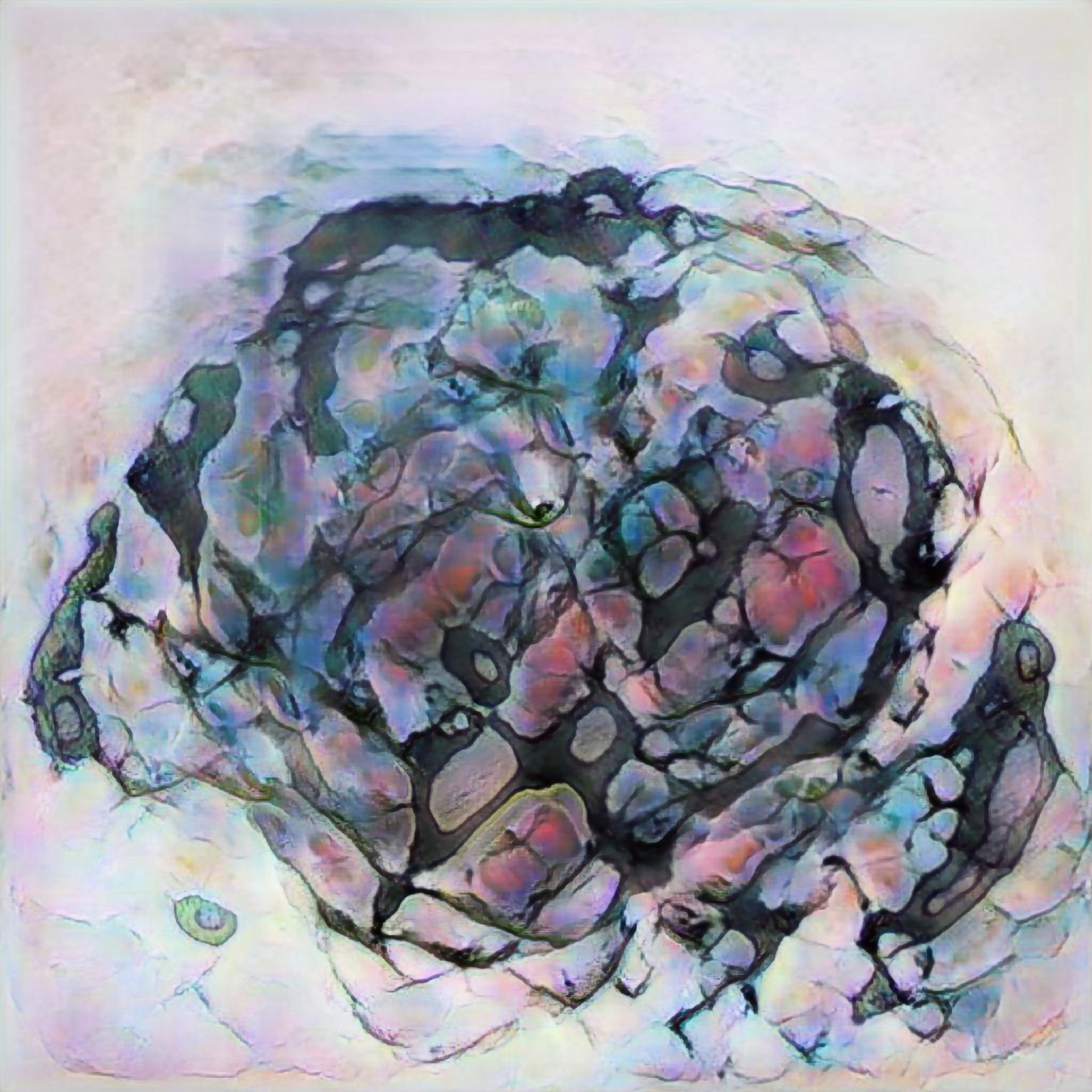







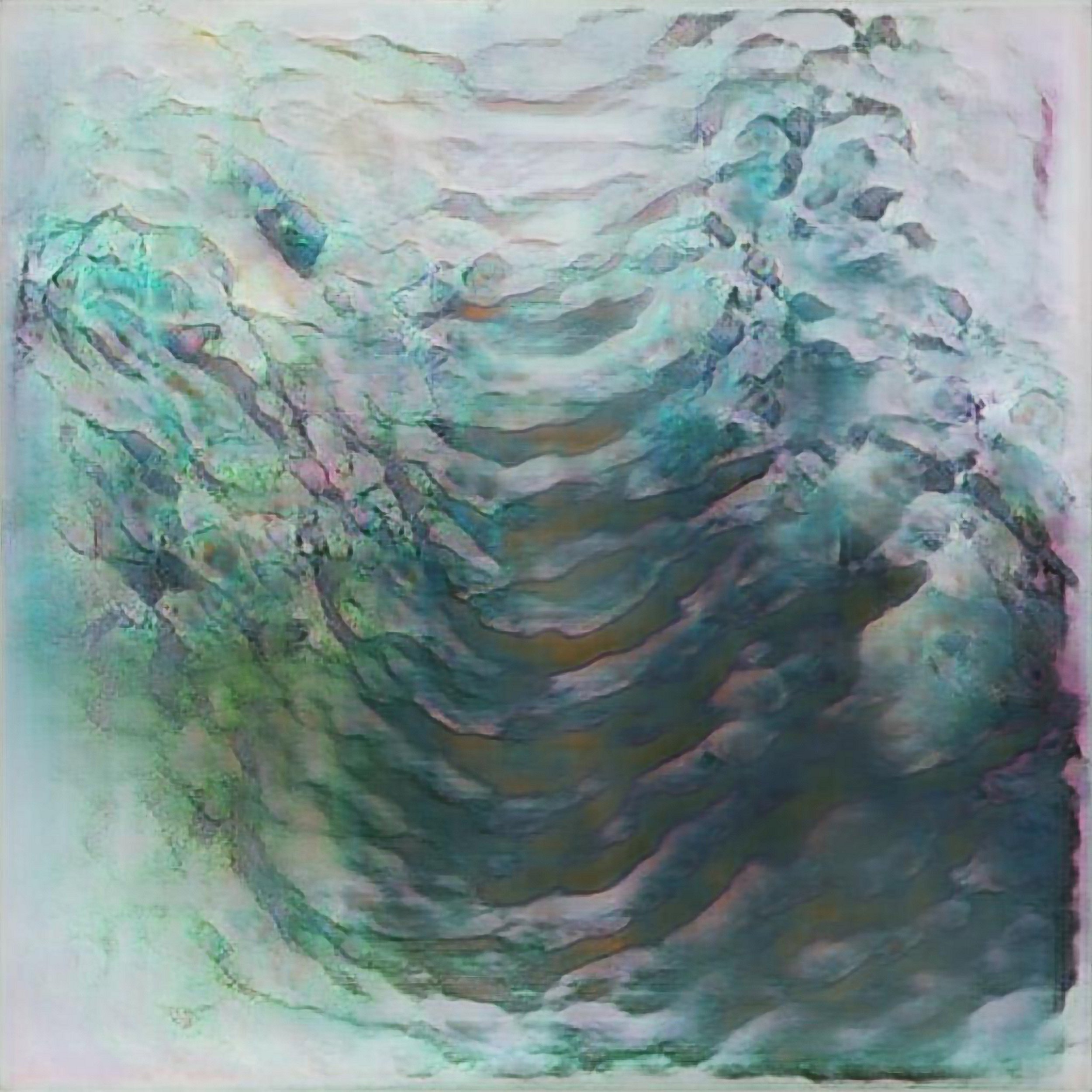


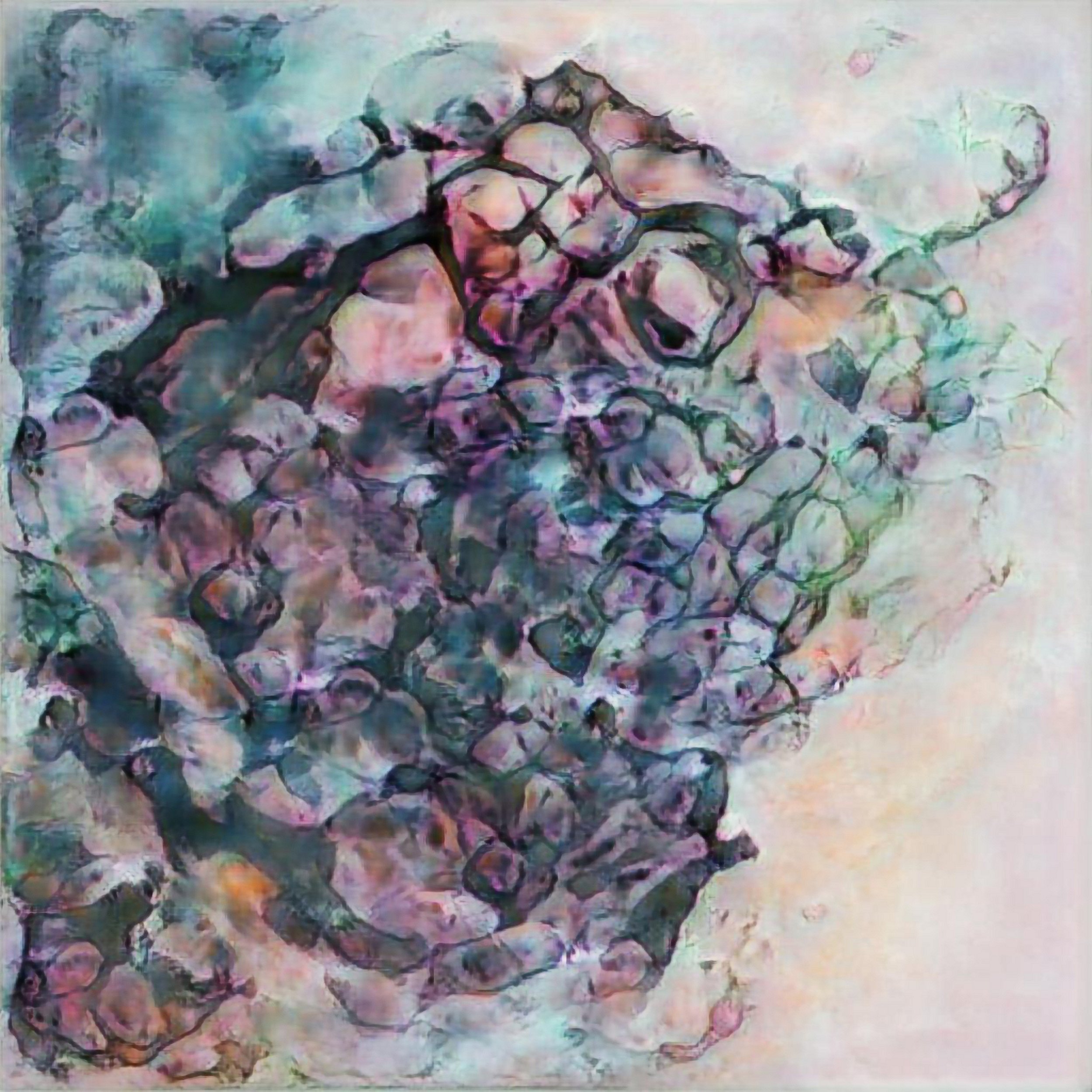
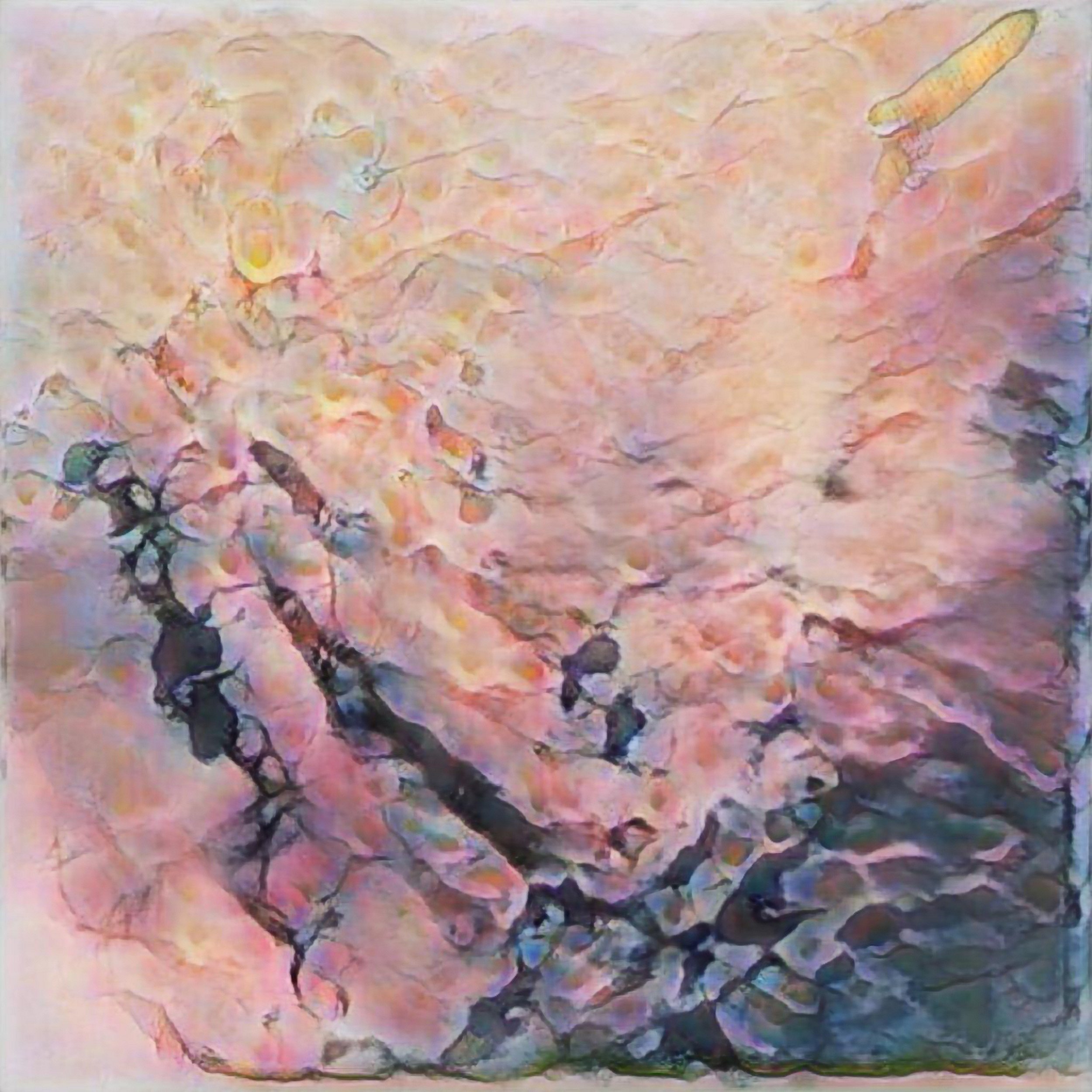







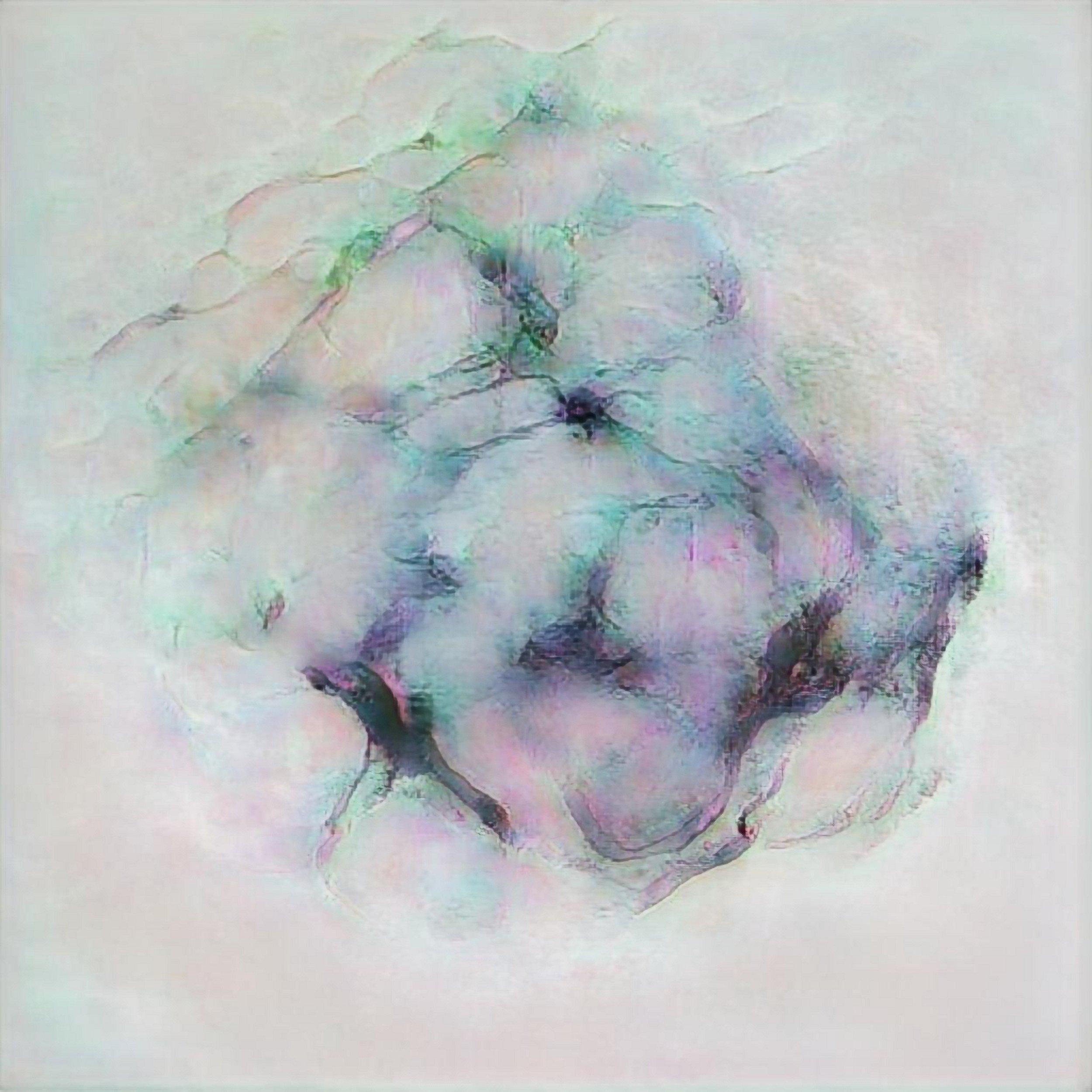




The exhibition consisted of work available as editions of one, in print format, or for the video work, as an NFT.
This next series of images is presented as a slide show to demonstrate the placement of still and video works together. In the exhibition, as you “approached” the video pieces, they would start playing, and loop continuously.
Below are some more screenshots of the exhibition space. During the exhibition, you could navigate the rooms using the arrows, your mouse, clicking on a piece to view it up close, or by using the menu to tour piece by piece or travel to a specific artwork. Clicking on an image would take you up close, and the works could be purchased from that screen.












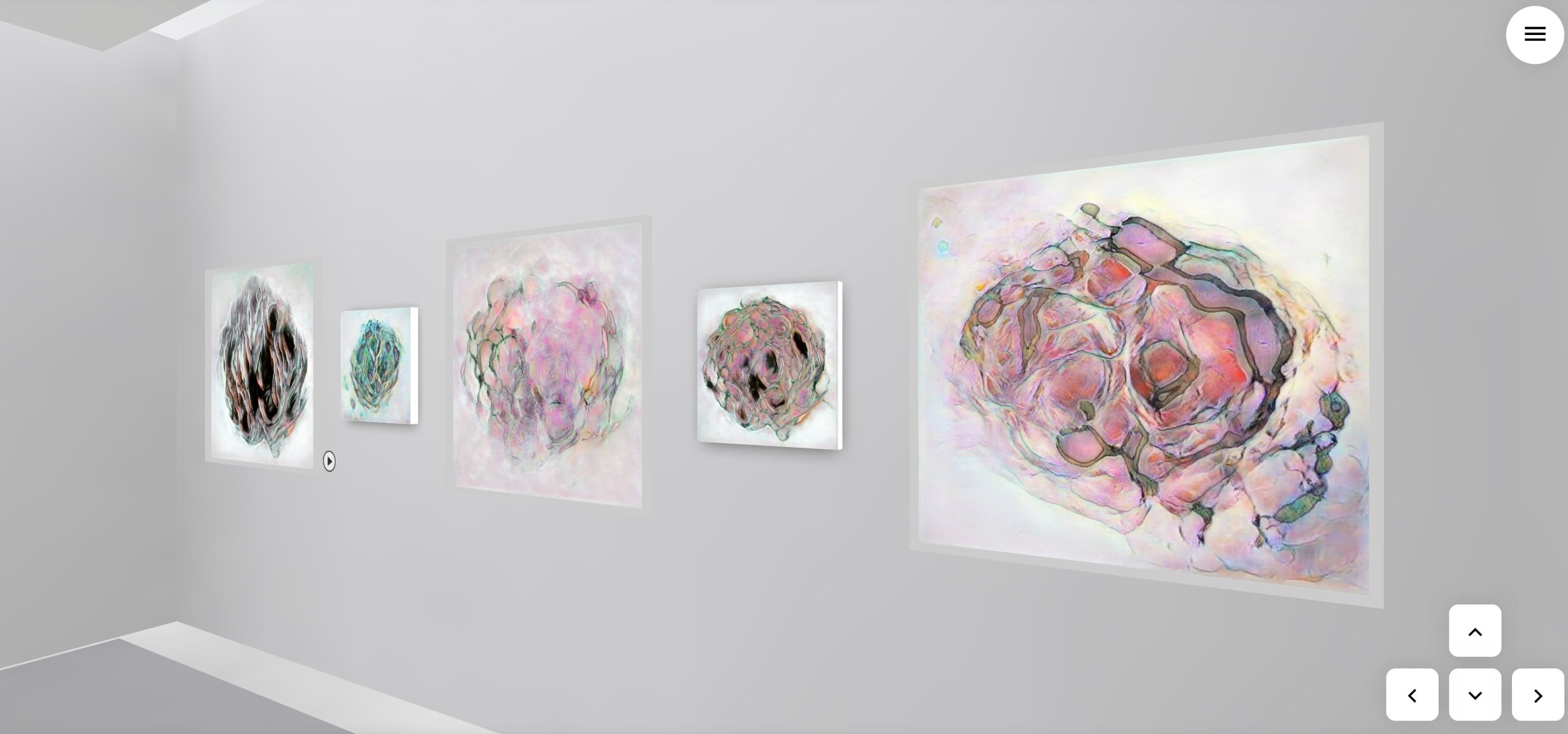









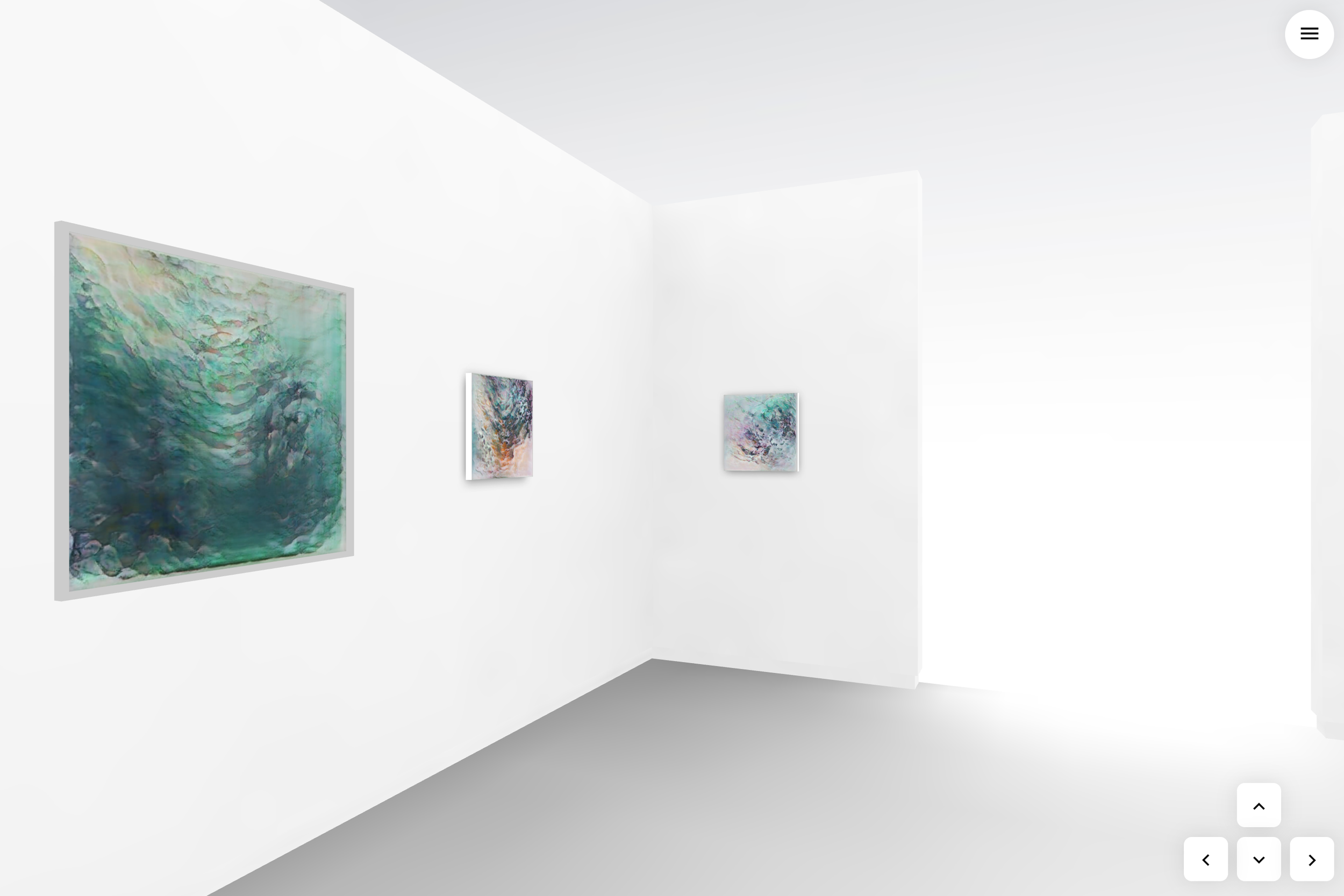


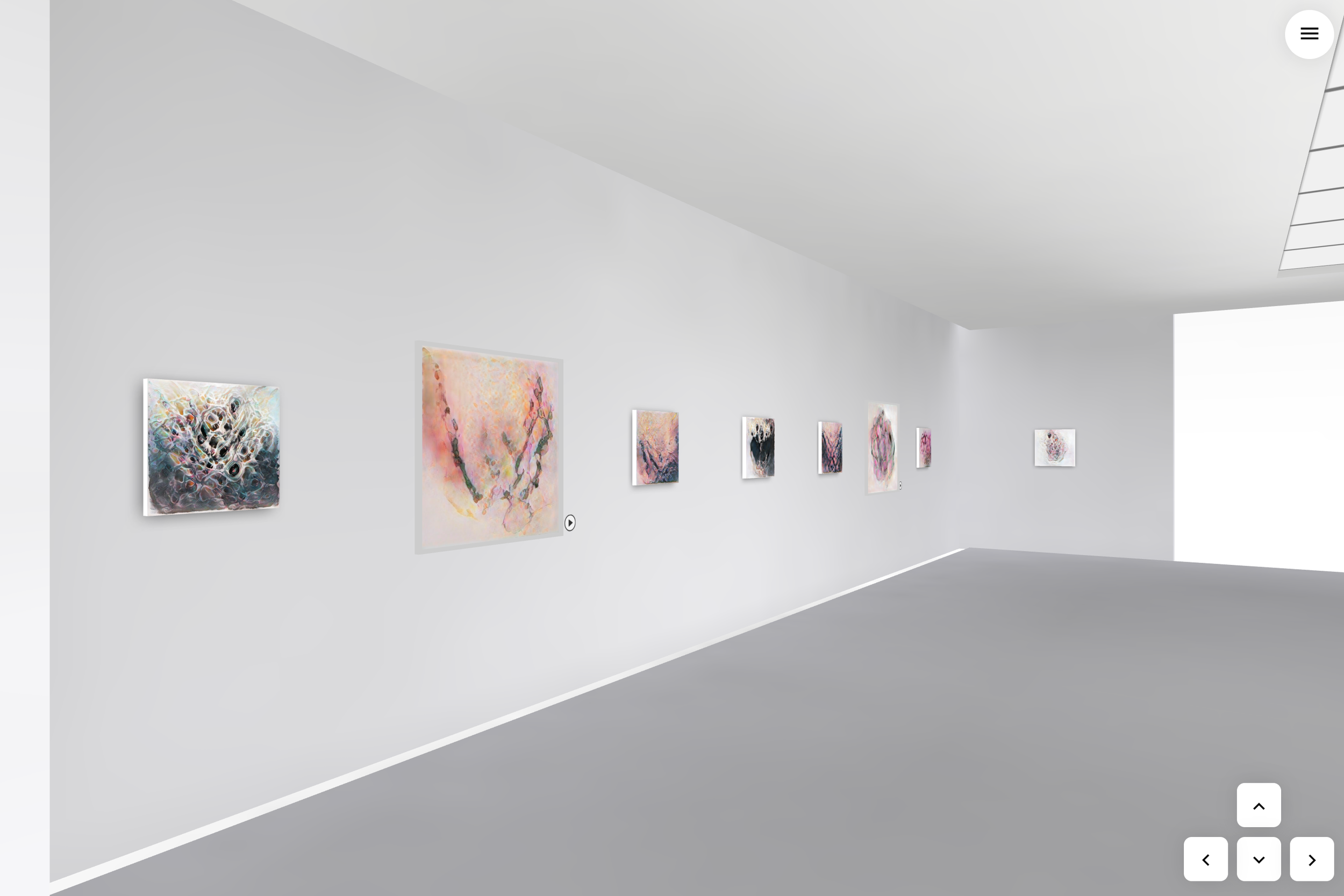






Thanks for taking a look at OBSERVANCE. If you want to make sure you get notified about my next exhibition, sign up for my newsletter here.
Simulacra Exhibition at Sulfur Studios
I’ve got four works in this group exhibition at Sulfur Studios in Savannah, GA. If you can’t make the opening reception (masking is required) or don’t feel comfortable doing so, you can view the exhibition images here - though the pieces I made are a level up in person!
I’m excited about participating in this exhibition because it was a perfect fit. The work I make is about radical hope - a concept in which we have acceptance of our current state, and hold certainty for a future state for which we cannot yet understand and does not yet exist. My work holds space and reflects upon ever-shifting forms. Informed by bodily knowledge, using traditional painting and drawing materials, I intuitively create works that give space to these forms to live. To further this exploration and reflection, I enter a body of work into an AI platform that generates new work in my visual language. While I haven't drawn or painted this space, it exists and resonates within me. Its realness is as much as any mental state we may experience.
I hope you get the chance to check it out! Let me know what you think & if you have any questions for me!
Considering Radical Hope
Jonathan Lear considers the role of Radical Hope in the context of the Crow and the cultural devastation that the white man brought upon them. I read this to better understand how to clearly portray what radical hope is.
While this discusses how Radical Hope enabled the survival of the Crow, there are many parallels to our current existence.
When I say, "Radical Hope is a belief in some goodness we can not yet understand", I feel the need to tack on that it is also not "toxic positivity". Radical Hope does not forego acceptance but embraces it. Lear explains that Crow tribe member and eventual leader, Plenty Coups, understands that the way of life is coming to an end. He does not know what is beyond it but is able to commit to the idea that goodness exists for him and his people, beyond his current understanding. Through accepting the unknown, he is able to come up with creative ways to re-interpret cultural ideals. Lear is clear to note that this commitment on the part of Plenty Coups does not mean that there is divine or historical correctness here.
Lear brings forth the virtue of courage as a means through which one is able to make such a commitment to something they can not yet understand. The points coming from Aristotle:
1) a courageous person has a proper orientation toward what is shameful and what is fearful
2) courage aims towards what is fine
3) a courageous person must grasp the situation he or she is in and, through experience, exercise good judgement
4) courage paradigmatically involves the risk of serious loss and enduring certain pains
This part was particularly helpful to me in explaining why radical hope is NOT toxic positivity. The difference is this definition of courage. There is an awareness present in radical hope, that is willful ignorance in toxic positivity. "Bold acts that derive merely from optimism are not courageous".
To have radical hope, a person must know what is good and aim towards that. They must be able to accept the current circumstance, and act upon sound judgement. They must be able to be vulnerable.
Lear goes on to discuss this dream that Plenty Coups had, and how it was a manifestation of radical hope (thus courage) , and that "radical hope can not just be psychologically advantageous, but a legitimate response even to a world catastrophe". This brings me to think about how, given current world circumstances, we, if nothing else, have this resource of radical hope. We can be the "poets" of our time, using this resource to imagine new ways of being, of processing, of bringing ourselves into the future good.
In being a psychological resource, radical hope creates the capacity to respond well to reality. If we lack this resource, if we fall into despair, or toxic positivity/ wishful optimism. If we lack this capacity, we lack the flexibility required to travel through devastation.
Lear considers the cultural ego-ideal, which informs the way one strives to live a rewarding life. Without this ideal, it is hard to understand what one lives for. Loss of this ego-ideal is devastation in itself. Radical hope holds a space in which this ego-ideal can be in flux. What the Crow tribe went through did not allow them to pass on traditional ideals, which is why it became a necessary resource to hold the ideal of being in flux. This allowed the Crow to "endure a loss of concepts".
When one does not know how to live a good life, despair seems inevitable. The concepts for what should equal happiness are gone, so how would one even continue to strive for that or experience that state of being?
Our lives are full of changes, not so constantly large as total cultural devastation, but how might the idea of radical hope enable us to adapt to those changes? How might it give us necessary resources to address current cultural failings and envision new ways of being that are infinitely more "fine"? How can we be vulnerable to allow this process? How must we embrace our sense of yearning for the good, so that we are clear-eyed and mindful of the current reality?
I believe that ideas like defunding the police, effective climate crisis action, and giving land back to native peoples come from the space held by radical hope. These ideas are courageous, mindful, aware, and strive to create a new culturally informed ego-ideal.
When I ask how some people can see, and some people can't, I largely end up back on the fact that some people can not accept - the history, the truth of current circumstance, the shift of ego-ideal. They are still living in magical optimism space, where something Jesus-like (or Trump-like) will come and save them (their way of living and believing). There are alternately those who have chosen despair. They are also unable to see, because the space they exist in is another sort of extreme, where nothing matters. It is interesting to me that they create these spaces too, unwittingly, and how important mindfulness is to the concept of radical hope.
I’m going to continue my reading and writing about this concept, and I would love to hear your thoughts too.
FEATURED POSTS










